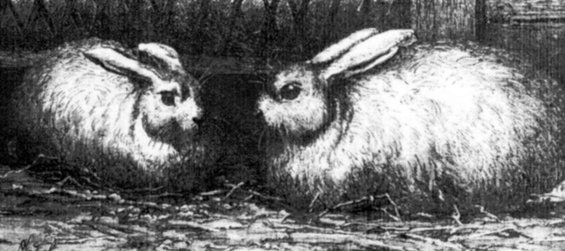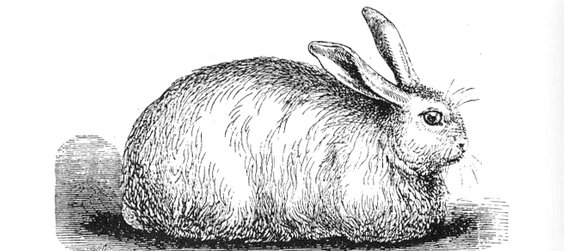NATURFASERN michael dal grande | Hünerbergweg 34 | 79539 Lörrach | Germany
Besucher / visitors
Caregora™ –
Die erste hochqualitativ ausgesuchte und zertifizierte Angora Faser
The first quality selected, certified angora fibre
The Beginning

Lapins d’angora – Gravure extraite de „Lièvres, Lapins et Léporides » d’Eugène Gayot,
Librairie Agricole de la Masion Rustique, Paris, 1865 + (source: le lapin angora, Thébault / Rougeot)
The origin of the Angora rabbit lies somehow in dark of the past, there is evidence it originates from Turkey, more precisely from the area of Ankara, which is giving name to this rabbit mutation.
It is the year 1708 when the British fellow Mortimer described in his book « the whole art of husbandry » a breed of white rabbits with very long hair, named the „the white shock turkey rabbet » The British have been also the first to breed this then named « silk rabbit » and prohibited its export to other countries in order to defend their Monopoly. In 1723 a British sailor brought a rabbit to Bordeaux to found the French Angora rabbit line.
Approx. 50 years later, around 1770 there is the first German Angora rabbit usage in Germany. The German von Meyersbach imported British ‘silk rabbits’ at that time. From Franconia through Saxony and Prussia the breeding of Angora rabbit spread over the whole of Germany. Even the nephew and successor of Frederic the Great supported the Silk-rabbit breeding and the manufacturing of knitwear, cloth and hats made of angora rabbit hair.
Today there are only a few breeders left in Germany, none of them do produce professionally, most of them trying to keep the genetics of the breed. In Europe, France is the biggest producer, but cannot be compared to the China. Industrial rabbit farms at a certain size are also rare in China; there the rabbits are kept by small farmers as an additional income to their earning.

Lapin d’angora – Figure extraite du Dictionnaire d’Agriculture de Barral J.A. et Saignier H., Hachette Paris 1886 +
(source: le lapin angora, Thébault / Rougeot)